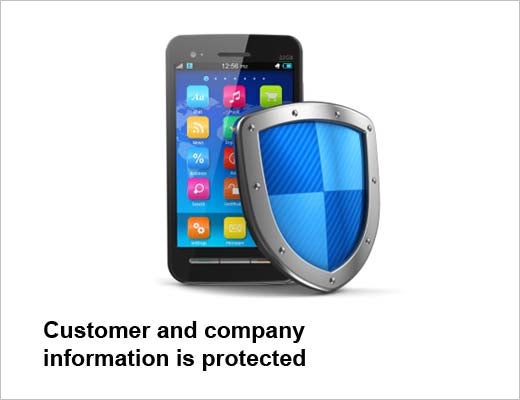Hand coding apps for multiple devices is no longer a realistic option. It’s too expensive, too slow, and too complex to manage. In an industry that is expected to deliver consistency and accessibility to the app-hungry, always-connected, multi-device population, we must consider multi-channel application development or face the prospect of falling behind the competition.
Why is this important now? The idea of one computer and one phone per person is outdated. The three-year hardware refresh cycle is dead. Whether users are employees or consumers, chances are they own or have been issued several types of devices. Now, users expect their apps to work on any device, instantly and seamlessly. The multi-channel approach gives users access to everything they want, with a consistent user experience. Same app, any device.
According to Dipesh Mukerji, senior director of product strategy and marketing at Kony Solutions, a multi-channel strategy is important today because it addresses the need to support smartphone, tablets, PCs, TVs and the Web. That said, it does require some rethinking of how we deliver applications, media and other content to each user based on who they are, what device they’re carrying, what they’re trying to accomplish, where they are, what security clearances they have, and much more. But as user expectations grow, development teams need to find ways to simplify and streamline app design, development, and deployment to maximize multi-channel delivery. Because of all of these expectations, a multi-channel approach can provide great benefits to developers, businesses, and the end users.
Click through for five reasons organizations should consider implementing a multi-channel approach to mobile development, as identified by Dipesh Mukerji, senior director of product strategy and marketing at Kony Solutions.
It seems that a new device or operating system comes out daily. This poses a significant challenge to organizations that need to satisfy the demands and expectations of their users. Users maintain a multitude of devices, which each contain an individualized development language. From Objective-C on iOS devices to J2ME on Blackberries, to C# & .Net on Windows devices, to Java on Android, developing and building apps for each one of these code bases is daunting and expensive. Leveraging a single-code base that works across all the plethora of device operating systems exponentially reduces the development cost for organizations to provide mobility for their users, without sacrificing capabilities.
Users expect a rich, seamless and flawless experience regardless of the device they use. Users tend to have limited patience with an app if it is not up to par with their expectations. Varying form factors (i.e. screen sizes and resolutions) need to be optimized for a premium user experience. Due to such a high-quality demand in a highly competitive app world, organizations must develop a pure and high-quality user experience on all devices or otherwise face extinction in the mobility space. A multi-channel approach allows for development to meet the high-standard expectations of the user.
Organizations are constantly worried about classified information becoming accessible out in the cyber world. Such concerns have grown due to the number of devices that can now access confidential information. The consequence of data breaches could be astronomical in terms of ROI, or even a compromise of safety. Having to build encryptions systems, firewalls, data wiping, data storage encryption, and n-level authentications for potentially every device supported can be overwhelming. A multi-channel approach allows organizations to enhance the ability to ensure all devices are secure without having to reinvent the wheel for each and every device. Utilizing such tools allows for IT departments within organizations to significantly reduce costs and ensure the security and safety of data integrity across the multitude of devices.
There’s an app for almost anything; if by chance the app doesn’t exist, chances are it will by tomorrow. Today, not only does the mobile solution have to be out quickly, it also must meet the high level of quality in richness of experience that users have grown to expect. The competition is such that if a business does not provide a mobile solution fast enough, the competitor(s) certainly will. A multi-channel development method has shown that apps are delivered to the market four times faster than if each channel was developed individually. With a build-once, reuse-everywhere approach, organizations never have to compromise the richness of the UI or the completeness of the functionality of the application.
The total cost of ownership (TCO) of mobility is not just the purchase price of devices. TCO consists of both hardware and software costs, such as the purchase and maintenance of actual devices, app development, upgrades, etc. The cost goes up exponentially with more devices and operating systems that organizations need to support. A multi-channel mobile strategy is the best way to keep TCO at a minimum and ROI at a premium. The primary areas where organizations will “feel” the difference in their wallet are development, support and maintenance costs. A multi-channel approach can reduce your TCO of mobility by almost eight times as much as writing a different code base for each channel.








